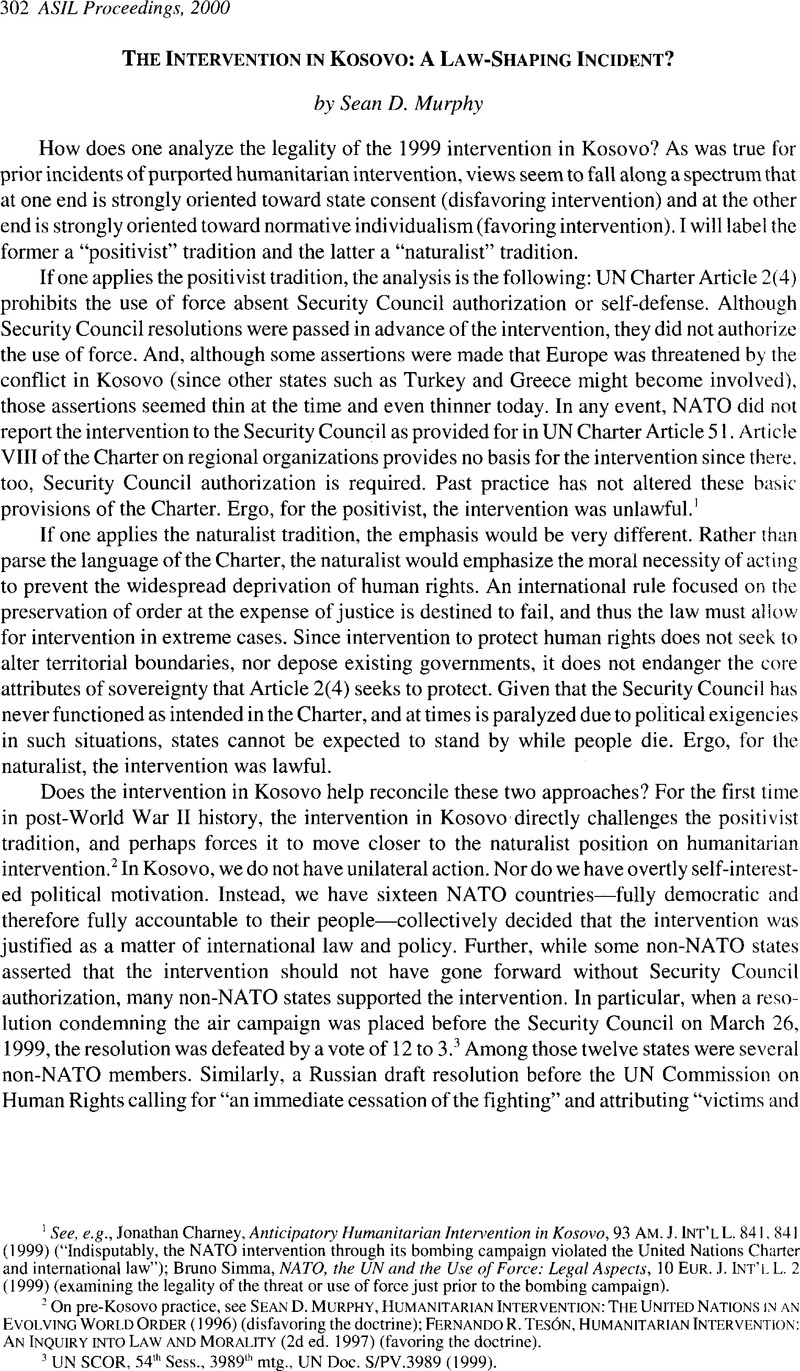Article contents
The Intervention in Kosovo: A Law-Shaping Incident?
Published online by Cambridge University Press: 28 February 2017
Abstract

- Type
- Human Rights and Humanitarian Intervention: The Legality of the NATO-Yugoslav-Kosovo War
- Information
- Copyright
- Copyright © American Society of International Law 2000
References
1 See, e.g., Charney, Jonathan, Anticipatory Humanitarian Intervention in Kosovo, 93 Am. J. Int’l L. 841, 841 (1999)CrossRefGoogle Scholar (“Indisputably, the NATO intervention through its bombing campaign violated the United Nations Charter and international law”); Simma, Bruno, NATO, the UN and the Use of Force: Legal Aspects, 10 Eur. J. Int’l L. 2 (1999)Google Scholar (examining the legality of the threat or use of force just prior to the bombing campaign).
2 On pre-Kosovo practice, see Sean D. Murphy, Humanitarian Intervention: The United Nations in An Evolving World Order (1996) (disfavoring the doctrine); Fernando R. Tesón, Humanitarian Intervention: An Inquiry into Law and Morality (2d ed. 1997) (favoring the doctrine).
3 UN SCOR, 54th Sess., 3989th mtg., UN Doc. S/PV.3989 (1999).
4 Report of the Commission on Human Rights on Its Fifty-Fifth Session, UN Doc. E/CN.4/1999/167 at 298-300 (1999)
5 S.C. Res. 1244 (June 10,1999) (the vote was 14-0, with China abstaining). For the debate, see UN SCOR, 54th Sess., 4011th mtg., UN Doc. S/PV.4011 (1999).
6 For background on events leading up to and following the intervention, see Murphy, Sean D., Contemporary Practice of the United States Relating to International Law, 93 Am. J. Int’l L. 167, 627, & 879 (1999)CrossRefGoogle Scholar.
7 NATO was criticized both for its target selection and for engaging in high altitude bombing (including cluster bombing), which protected NATO aircraft but which increased the likelihood of collateral civilian casualties. Regardless of one’s view of those criticisms, the issue of how an intervention should be conducted is separate from whether the intervention is permissible at all.
- 2
- Cited by


